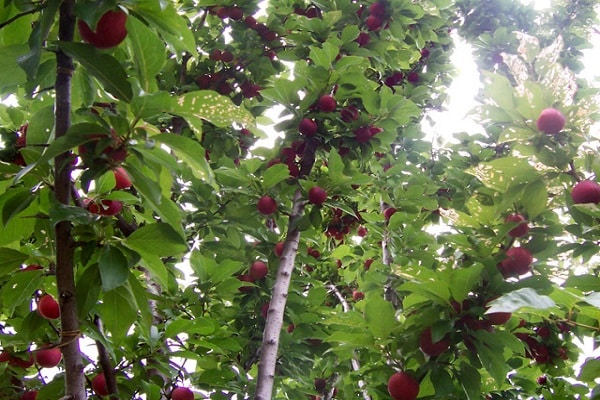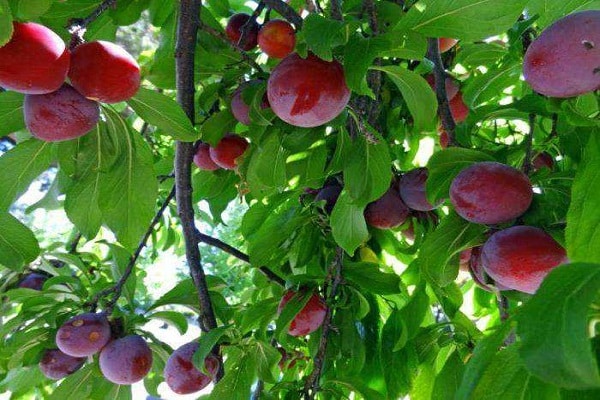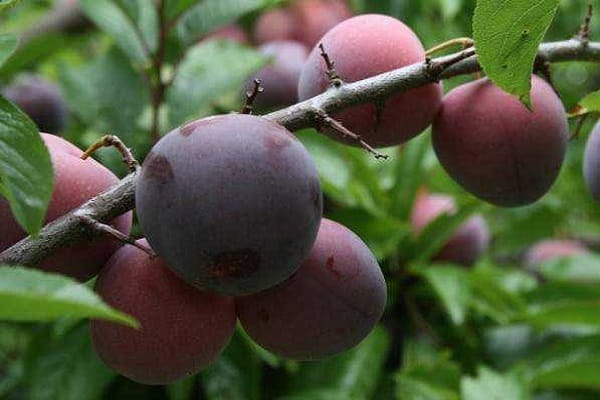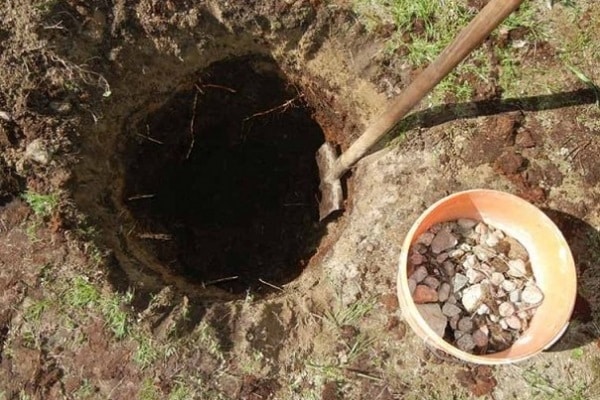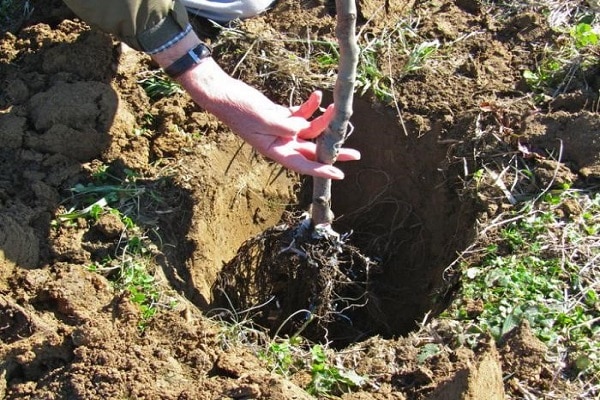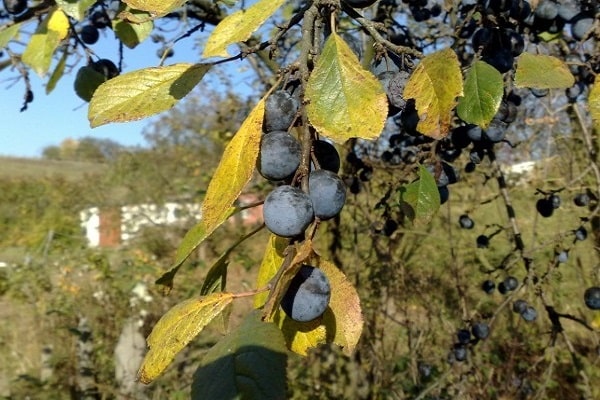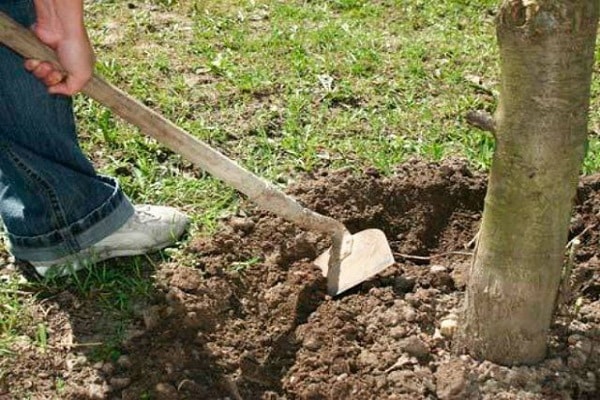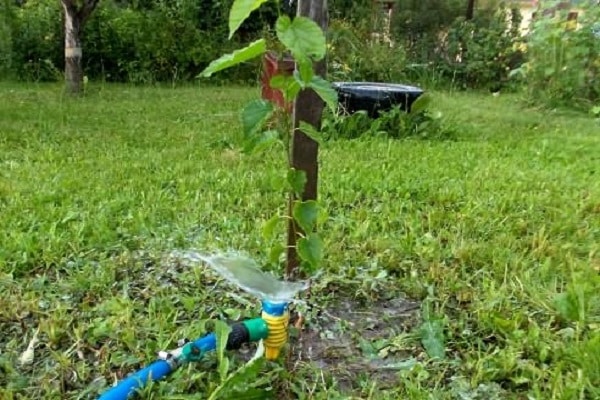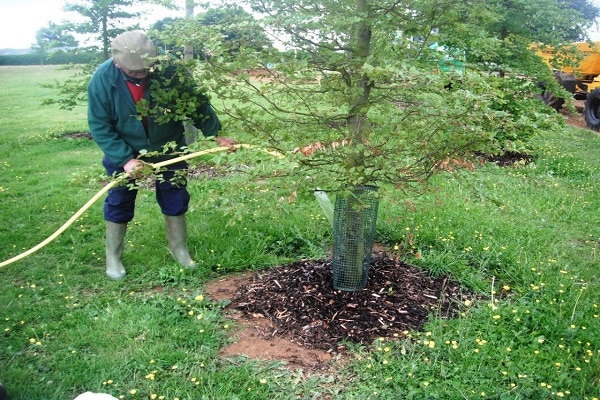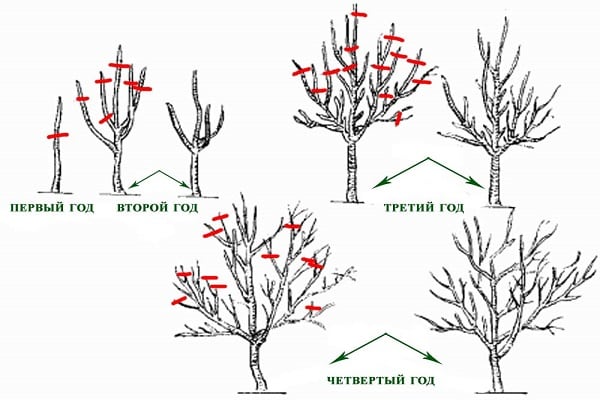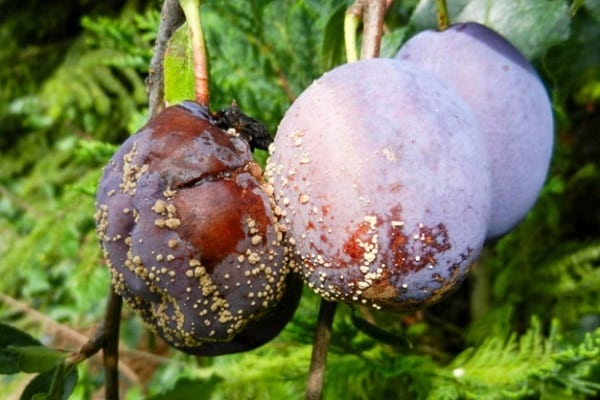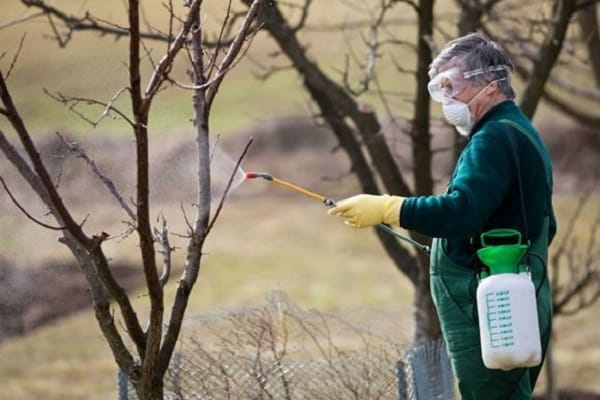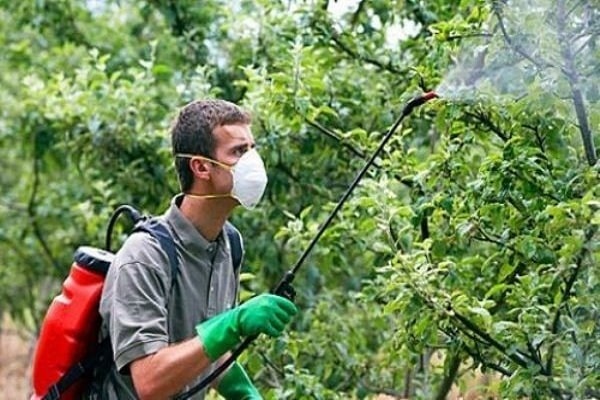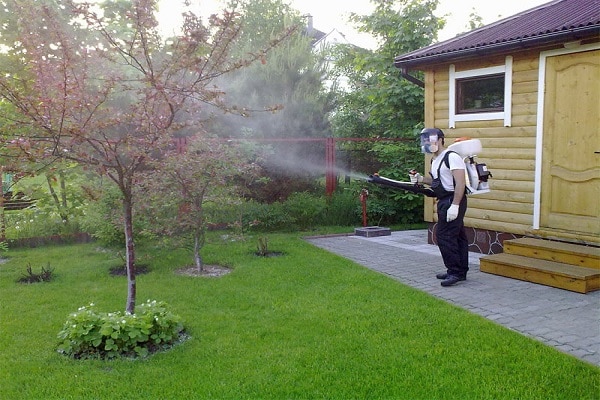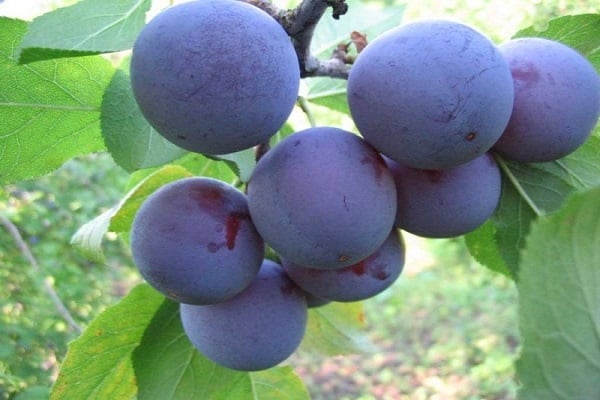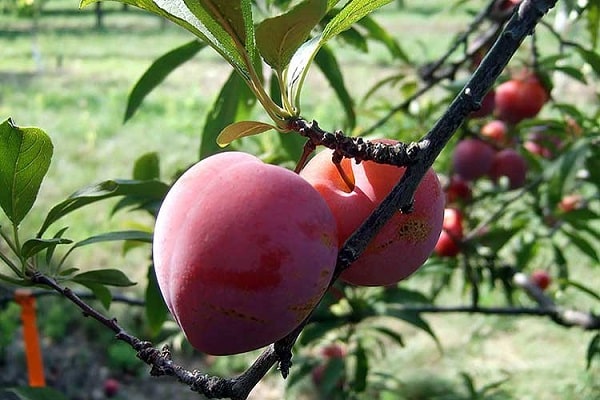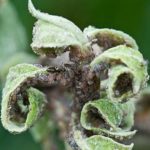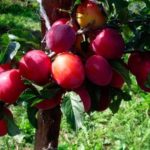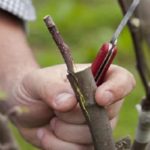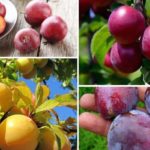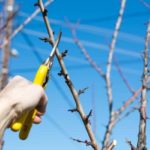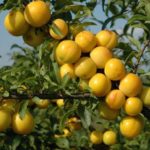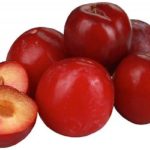Lovers of this fruit tree face problems when growing it. Studying the information will help you avoid mistakes and understand how to grow plums correctly. There's nothing special about it. Following the recommendations will help you get a healthy and strong tree that will give a glorious harvest.
- Conditions for growing plums
- Composition of the soil mixture
- Climatic conditions
- Advantageous neighborhood
- How to plant a plum
- Optimal timing
- Optimal location on the site
- Soil preparation
- Layout and dimensions of the landing pit
- Landing technology
- Plum care
- Strengthening fruit branches with supports
- Taking care of the trunk circle
- Watering and mulching
- Top dressing
- Crown formation
- When to prune
- Schemes and cutting technology
- Do I need to cover it for the winter?
- How to treat infections and insects
- Processing times
- In early spring
- During flowering
- After flowering
- During the period of fruit ripening
- in autumn
Conditions for growing plums
To grow a fruit crop, you must follow the subtleties and recommendations of experienced specialists. If you create optimal conditions for growth and development, the tree will reward you with the declared harvest.
Composition of the soil mixture
Knowing what kind of soil the plant being grown likes, it is easier for a summer resident to choose a place for planting. The future harvest of seedlings depends on this.
Plum grows well in clay and medium clay soil. If the soil has a high calcium content, the tree will begin to grow quickly and bear fruit abundantly. High acidity is detrimental to plums, as is close groundwater.
Climatic conditions
Breeders develop tree varieties that are adapted and suitable for growing in any climatic conditions. When choosing a variety, a summer resident must take into account the climate of the region.
Advantageous neighborhood
Some cultures cannot stand living next to each other. Therefore, when planting a tree, it is important to consider what plants are located in the neighborhood.
You should not plant a plum next to:
- walnut;
- hazel;
- fir;
- birch;
- poplar
The tree is tolerant of the pear growing to the side.
Plum grows well next to cherries, apple trees, and black currants. Raspberry bushes, strawberries, and shade-tolerant flowers are planted at some distance.
How to plant a plum
The tree is grown in open ground. They plant it in different ways, the summer resident chooses the optimal and more suitable method. When planting, various subtleties are taken into account. Following these techniques will result in a healthy tree growing.
Optimal timing
Planting material is planted in spring or autumn, depending on the preferences of the summer resident. Gardeners recommend planting trees in the fall in warm regions, and early spring in colder regions.
When the soil completely melts in the spring, then the seedlings should be planted. It is advisable to do this at the beginning of sap flow.
In the fall, the date is determined by the summer resident himself, based on the climatic characteristics of the growing region. It is advisable to plant seedlings 1.5-2 months before the first frost.
Optimal location on the site
In addition to the composition of the soil, the summer resident must take into account the fact that the plum, although frost-resistant, needs a place protected from wind and drafts. Groundwater should be located at least 2-3 meters deep.
Do not forget about sunlight; the tree should receive it most of the daylight hours.
Before planting a seedling, you should calculate the optimal distance from neighboring trees and shrubs.
Soil preparation
The land in the area selected for planting must be prepared in advance. It is recommended to plant planting material in fertilized soil.
If there is a lack of nutrients, they are added immediately before digging. As an option, humus, peat, river sand (if necessary), and complex mineral fertilizers are added.
If the soil is acidic, lime, wood ash or dolomite flour are added to neutralize.
Layout and dimensions of the landing pit
Trees are planted in pre-prepared holes. The scheme is calculated based on the size of an adult tree, depending on the variety, they are different. The approximate distance between plums when planting is 2.5-4 m.
The planting hole should be 0.8 m wide and 0.5 m deep. It is advisable to plant plums 10-14 days after preparation, not immediately.
For seedlings with a closed root system, there are no special differences in the planting pattern and the formation of the planting hole.
Landing technology
A stake is driven into the middle; it will serve as a support for fragile seedlings. Fill the hole with fertile soil.
Pour the earth into a mound, slightly above the edges. This is necessary so that after planting the settled soil does not form a hole near the trunk. Rainwater will stagnate in it, which will lead to rotting of the root system.
A seedling is placed on the resulting hill and carefully sprinkled with a layer of soil. Lightly shake the plant to help the roots position themselves correctly. Sprinkle again and water.
Plum care
The plant needs care not only in the first year. If you follow the specifics of planting plum trees, then caring for them will be easy. By following standard agrotechnical practices, the gardener will receive a healthy plant from a young plum.
Strengthening fruit branches with supports
To ensure that the grown seedling does not suffer from the abundance of fruits, it is necessary to install supports for the branches with berries.
They use any available material, often branches that are forked at the top. They are installed approximately in the middle of the branch with fruits, slightly lifting it upward. This support will help avoid breakage. Especially with strong gusts of wind.
Taking care of the trunk circle
The soil near the seedling needs care; through it the plum receives nutrients. Necessary:
- loosening;
- removal of weeds and shoots;
- mulching;
- watering and fertilizing.
Weeds are carriers of viruses and bacteria; in addition, pests find refuge in them. Therefore, its timely removal will help protect the plum from diseases and insects.
Watering and mulching
Plum loves moisture.Therefore, during dry periods the tree needs abundant watering. How many times to water a tree per season is difficult to answer. It is advisable that during irrigation the soil should be wetted to a depth of 40 cm.
The watering norm for one tree is 4-5 buckets. During the fruiting period, the amount of moisture is increased. There is no need to water frequently; it is necessary to moisten abundantly.
Mulching is practiced by many summer residents; the layer protects young roots from the sun. And in more mature trees, mulch reduces the number of weeds and prevents rapid drying out.
Top dressing
Organic fertilizers are applied once every 2-3 years; the first time they are drained, they are not needed. When planting a tree, humus, peat and mineral fertilizers are added to the planting hole.
You need to care for the growing seedling in such a way that the tree does not need nutrients. Then it grows well and bears fruit faster.
The fertilizing calendar should contain mineral fertilizers, less often organic matter. You should not add a lot of nitrogen; the tree will begin to form green mass, but there will be no fruits or ovaries.
In the fall, phosphorus or potassium is added when preparing plants for winter. If the leaves on a tree turn pale, gardeners recommend spraying them with diluted saltpeter or urea.
Crown formation
In order for the plum to grow correctly, it is necessary to form a crown. This is done in spring or early summer. In July-August, only sanitary pruning is carried out.
When to prune
Summer residents advise forming a crown in early spring in order to injure the plants as little as possible. Some do this in the fall, after all the fruits have been collected. Sanitation is done throughout the growth period.
Schemes and cutting technology
Without proper formation, the plum will grow in height, which will significantly complicate harvesting.Therefore, it is necessary to prune from the first year of the seedling’s life.
Various schemes are used. Mostly gardeners use simple formations. To make the tree grow short and produce a lot of fruit:
- the first year the seedling is cut to height, leaving the conductor at a level of 1 m from the ground;
- the second year, 6-7 skeletal branches are left around the central branch, the length is cut to 10 cm;
- the third year, 3-4 side branches are left on each skeletal branch, they are shortened;
- In subsequent years, all branches that grow inside the crown and reduce growth are removed.
With appropriate molding, the plum will give the declared harvest, which the summer resident can easily remove from the tree.
Do I need to cover it for the winter?
Plum trees can withstand harsh winters in most cases. But it is covered for cold weather, this applies to young trees. Older plants are mulched for the winter, covering the root system.
How to treat infections and insects
Insect invasion is a scourge familiar to summer residents. Timely treatment helps protect plants from viruses and pests. They use chemicals, biological agents, and traditional methods. Gardeners recommend spraying with Bordeaux mixture, copper sulfate and other preparations.
Processing times
Different treatment times are recommended against pests and diseases. It is recommended to root or spray the tree. By following the rules, the summer resident will get a healthy plant and save the harvest.
In early spring
Treatment at this time is carried out before the start of sap flow. Preventive measures begin to be taken immediately after the snow melts and the soil dries out.
Old foliage is removed from trees, dry branches are trimmed, this is where pests and pathogens overwinter.
Without much risk, summer residents use chemicals; they are stronger, more effective and last longer. Tree trunks are whitened, cracks are treated with copper sulfate, and cuts are treated with garden varnish.
Spraying with copper sulfate will help against many diseases, ensuring that the composition flows into all the cracks. They are treated with insecticides against insects.
During flowering
Treatments at this time are carried out with caution, since some chemicals can linger in the plant for a long time and be transferred to the fruit.
The red fruit mite is especially dangerous for plums. It is activated just at the beginning of flowering. The pest is capable of destroying the ovaries, leaving the summer resident without a harvest.
The following drugs are used to control insects:
- "Apollo"
- "Nissoran";
- "Fitoverm";
- "Neoron";
- "Sunmite."
Before use, you should read the instructions and weigh the pros and cons. Summer residents use biological means to combat insects and infections or find folk remedies. Their action is not so long-lasting and effective, but it is safe for humans.
After flowering
Just like during flowering, chemicals cannot be used. Insects that prevent the formation of ovaries in summer are dangerous for the plant. Pests can destroy most of the crop or seriously damage the plum tree. These include:
- aphids;
- leaf roller;
- leafhopper and other insects.
Treatment in early spring is important. But if pests do appear, the plant is sprayed after flowering. Use folk remedies or biological preparations.
During the period of fruit ripening
The best protection is folk remedies. Health is more important than long processing labor. Traditional methods include soap solution or ash solution.They use strong-smelling infusions that repel insects for a while, but do not help get rid of them.
Against diseases during fruit filling, infusions of herbs and biological agents that do not affect the human body are used. For example, onion peels, garlic, tobacco.
Green fruits are attacked no less than ripe ones, so the summer resident always monitors the appearance of the fruit.
At this time, baits are hung on trees that attract adult individuals and help destroy them. The fight against insects is ongoing.
In August, on nights in calm weather, the garden is fumigated with smoke. Set the straw on fire, add potato or tomato tops to it, and, if desired, replace it with wormwood. This process will help get rid of many insects.
in autumn
After the harvest, chemicals are used again. The tree is preparing for winter, so immediately after fruiting is completed, preventative treatment against diseases and pests is carried out. Complex means are used. The processing time varies; summer residents recommend doing this in September. If necessary, repeat the procedure in October.
It is not difficult to grow plums on the plot. To obtain the desired harvest, optimal conditions are created and proper care is taken.

